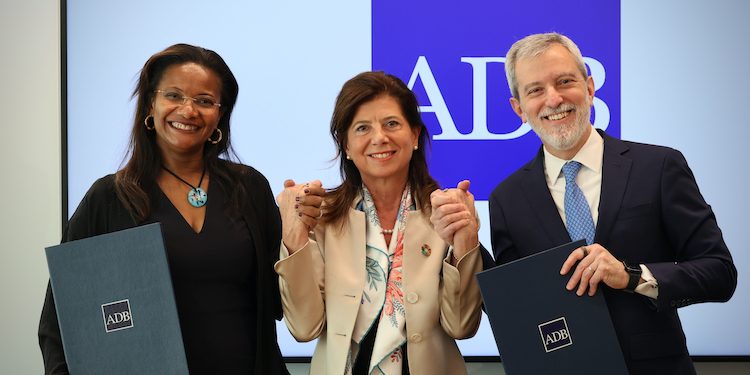The African Development Bank (AfDB) and the Asian Development Bank (ADB) have signed a US $1bn exchange exposure agreement (EEA) to enhance AfDB’s capital base on the sidelines of the IMF /World Bank Annual Meetings in Washington DC.
- Exposure exchange agreements work as a diversification and capital management tool to optimize their balance sheets by synthetically exchanging a portfolio of loan exposures with exposure to countries where credit exposure is less or non-existent.
- The deal is the third such agreement the AfDB has inked since 2015, and the second with the ADB.
- The ADB also signed a $1.5bn agreement withInter-American Development Bank (IDB), bringing the total the Asian regional multilateral lender has signed since 2020 to five deals worth $6bn.
“This transaction is a continued demonstration of multilateral development banks’(MDBs) cooperation as recommended by the G20 International Financial Architecture working group and remains in line with the G20 call for development institutions to optimize and leverage their balance sheets,” Hassatou N’Sele, African Development Bank’s Vice President for Finance and Chief Financial Officer.
The exchange is “synthetic” in nature as it does not entail the actual transfer or removal of specific loans from either MDB’s balance sheet and only involves the guarantee for a portion of the overall exposure. The exposure exchange transaction does not change the relationship between the original lender and the borrower.
ADB Q&A on EEA’s
The deal is the third such transaction in AFDB‘s Balance Sheet Optimization strategy: in 2015 and 2023, it signed similar ones with Inter-American Development Bank (IADB) and the International Bank for Reconstruction and Development (IBRD), and with the Asian Development Bank respectively.
“The increasing use of this risk transfer method is a great example of the enhanced cooperation across MDBs and our willingness to work together as a system,” ADB Vice-President for Finance and Risk Management Roberta Casali.




